Securities Fraud
Securities fraud is a broad term used to describe the use of misrepresentations (i.e. lies), or omissions (i.e. intentionally leaving out important information) to deceive someone into making a securities transaction.
Federal law, state law, and FINRA arbitration rules universally prohibit securities fraud.
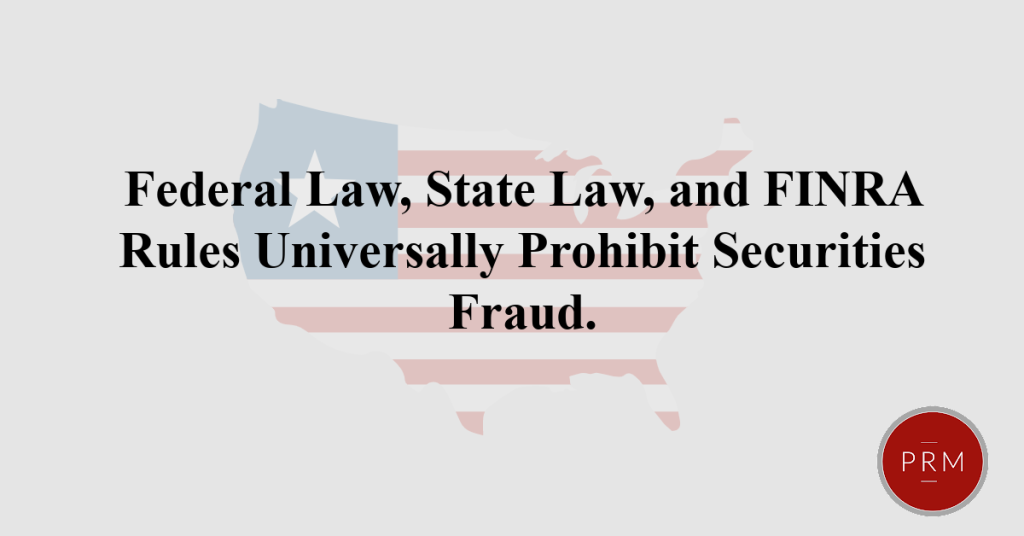
Federal Law Prohibits Securities Fraud
The most widely-cited law that prohibits securities fraud is Section 10b-5 of the Securities Exchange Act of 1934. Attorneys often refer to this statute simply as “Rule 10b-5.” That law states:
It shall be unlawful for any person, directly or indirectly, by the use of any means or instrumentality of interstate commerce, or of the mails or of any facility of any national securities exchange,
(a) To employ any device, scheme, or artifice to defraud,
(b) To make any untrue statement of a material fact or to omit to state a material fact necessary in order to make the statements made, in the light of the circumstances under which they were made, not misleading, or
(c) To engage in any act, practice, or course of business which operates or would operate as a fraud or deceit upon any person,
in connection with the purchase or sale of any security.
State Laws Prohibit Securities Fraud
State securities laws across the country also have statutes that prohibit securities fraud. Most of these state laws closely mirror the language in Rule 10b-5.
FINRA Rules Prohibit Securities Fraud
FINRA Rule 2020 also expressly prohibits securities fraud. That rule states:
No member shall effect any transaction in, or induce the purchase or sale of, any security by means of any manipulative, deceptive or other fraudulent device or contrivance.
What Steps Can Investors Take to Recognize Securities Fraud?
Preliminarily, securities fraud can reveal itself in many ways beyond the scope of this post. This page discusses securities fraud only as it relates to individuals or entities with brokerage accounts who invest in something based on false or misleading information, which then loses value. And had the investor known the truth about the investment, they would never have invested in the first place.
Viable securities fraud claims almost always revolve around one or both of the following:
Misstatements or omissions about the relative risk of an investment.
Misstatements or omissions about the fees charged in connection with an investment.
But how can investors recognize if they have been a victim of securities fraud? There are two, general steps investors can take that might shed some light.
Step 1
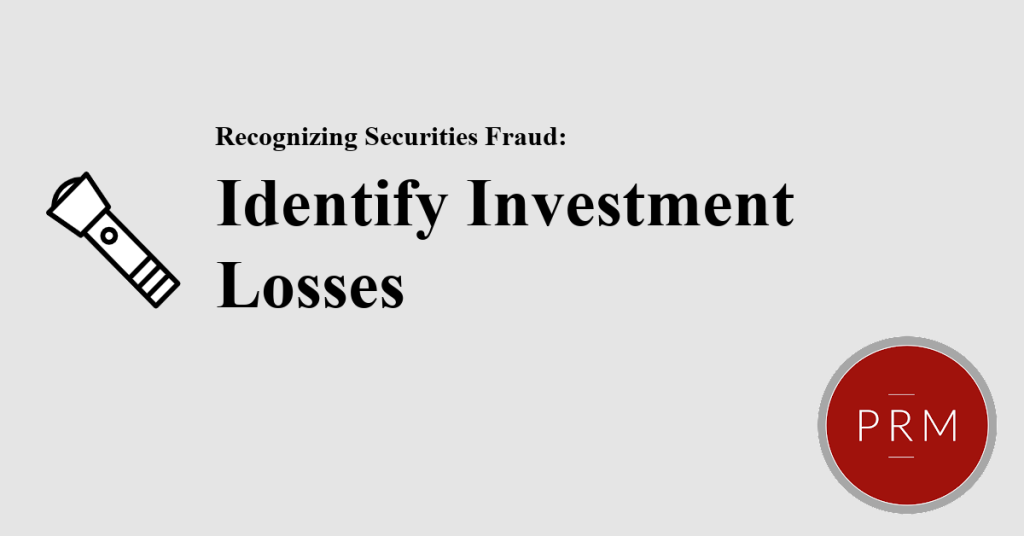
Before an investor can identify securities fraud worthy of taking legal action, they must have investment losses or other measurable financial losses. These losses are known as “damages.” As a practical matter, before an investor can have any civil claim, they must have damages. Without damages, an investor (with rare exceptions) does not have a viable case.
Damages can be calculated in a variety of ways and are fact specific. Investors unsure about how to calculate their potential loses ought to seek the advice of competent counsel. But consider a simple example.
Example:
An investor buys one share of ABC stock for $100. Six months later, ABC stock falls to $50 per share and the investor sells his share. The investor’s losses are $50.
Assuming the investor can an identify investment losses, they can proceed to step 2.
Exploiting the Victim’s Ignorance
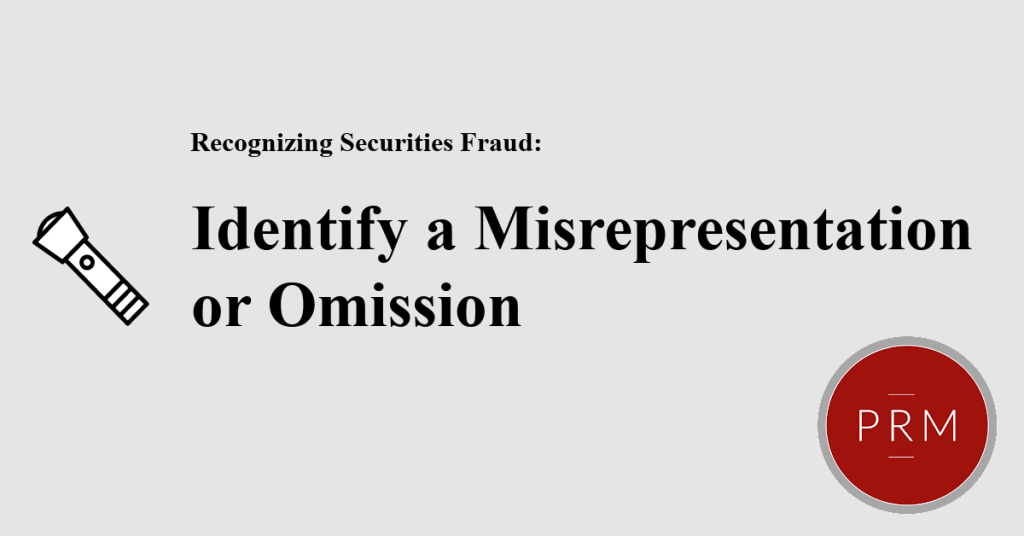
What were you told (or not told) about the investment? And did you believe it? Securities fraud claims always hinge on the representations (or omissions) that the seller (most often a stock broker or brokerage firm) makes about the investment. More specifically, what did the broker represent (or fail to represent) about the relative safety of the investment that lost value? Consider the following examples that provide generic demonstrations of how to identify misrepresentations or omissions.
Example- A broker who makes an affirmative misrepresentation about the safety of an investment.
Suppose a broker represents to an investor that an investment is safe. In truth, the investment is speculative and risky. The investor believes that the investment is safe relying on what the broker told him. The investor purchases the investment and it loses value.
Example- A broker who makes an improper omission.
Suppose a broker represents that an investment generates a 5% rate of return. But the broker knowingly omits that the investor cannot liquidate the investment (i.e. turn it into cash) for 3 years. The broker also knows that the investor will likely need access to cash from the investment in less than 3 years.
The investor buys the investment believing he can liquidate it at any time. In year two, the investor needs to sell the investment to make a tax payment, but cannot. The investor suffers tax penalties that he would not have had but for the fact that the broker omitted that the investment lacked liquidity.
In practice, misrepresentations and omissions are difficult to identify and often require the assistance of competent counsel.
How do Brokers and Brokerage Firms Typically make Misrepresentations about Investments?
In general, there are two ways misinformation gets relayed to investors.
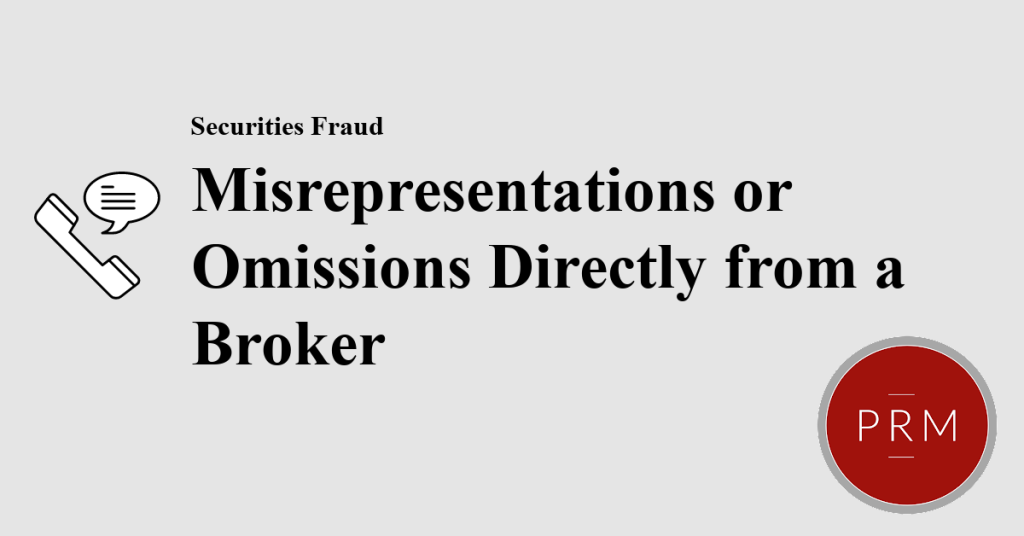
Financial advisors interface with investors the most. Because of that, they have the most opportunity to make misstatements about an investment (or investments) they recommend. Financial advisors also regularly prepare presentations associated with investment recommendations that could contain inaccurate or misleading information. Or they pitch investments verbally, over the phone or in-person. All these interactions give brokers the opportunity to make misrepresentations about investments.
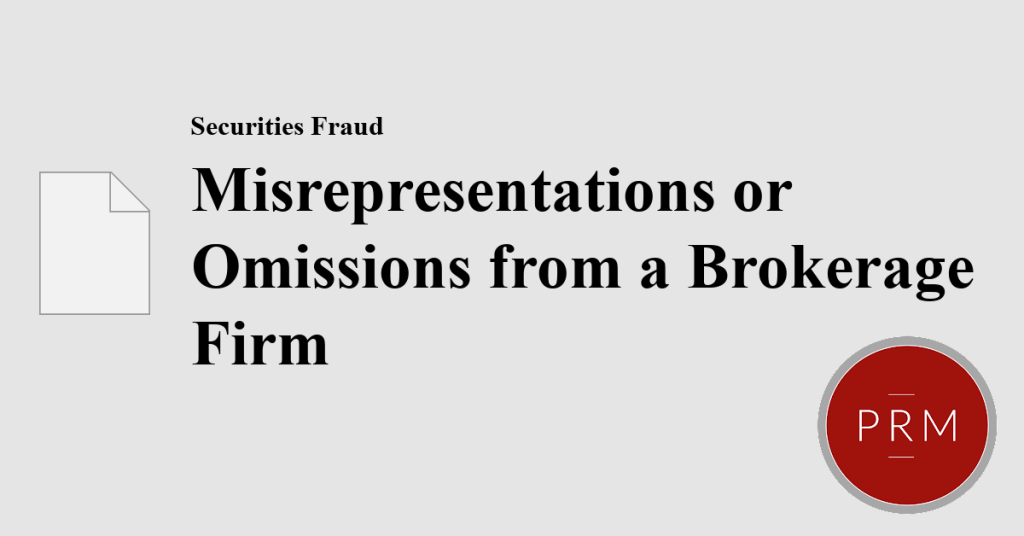
Brokerage firms create marketing material, prospectuses, and other documents that describe the nuances of the investments they sell. These documents generally include risk information and features about how the investment works. These documents provide the basis for the risk profile that a brokerage firm assigns to its investments- conservative, moderate, speculative, etc.
Broker-dealers can misrepresent information contained in these documents. This issue often appears in cases involve financial product failures. A financial product failure is a widespread collapse of a specific security or common group of securities that one or more broker-dealer sells to clients.
Securities fraud is a broad, complex topic. But having a general sense of how to spot it can be to the benefit of any investor.
*The Law Offices of Patrick R. Mahoney is a full service law firm with extensive experience litigating cases involving securities fraud. This page is for information purposes only and does not constitute legal or investment advice; nor is it a comprehensive explanation of all securities fraud-related rules and procedures. If you believe you have a claim, you should speak to competent counsel to better understand your options. Or, contact us.*
